
Judi Durda is a toxicologist and ecologist with more than 30 years of experience in the health and environmental science fields, working on behalf of both government and private clients. Ms. Durda specializes in using science and science-based strategies to address complex technical issues related to the manufacture, use, or disposal of chemicals, consumer products, pharmaceuticals, and hazardous and nonhazardous wastes. Her specific experience includes risk assessment, toxicological evaluations, forensics analysis, and regulatory compliance support under a variety of federal and state regulatory programs and in related litigation. She has conducted health and safety evaluations of chemicals present in food, beverages, and medical devices; conducted technical evaluations to support product registration of crop protection chemicals; assessed the potential human health risks from the use of veterinary antibiotics, and initiated research on the effects of consumer product chemicals on children’s health. She also has extensive experience with emerging and yet to be regulated chemicals including per- and polyfluoroalkyl substances (PFAS).
In addition, Ms. Durda has extensive experience in the evaluation of ecological risks and natural resource damages potentially associated with chemical release or disposal. She has conducted risk and damage assessments and designed monitoring programs at waste sites in the United States and abroad. A hallmark of her work has been development of assessment strategies that support cost-effective remedial solutions and simultaneous consideration of potential restoration needs (e.g., natural resource damages) at a site.
M.S., Phi Kappa Phi, Zoology and Toxicology, North Carolina State University, Raleigh, North Carolina, 1986
B.S., Phi Beta Kappa, Biology and Environmental Science, George Washington University, Washington, DC, 1982
Certified Senior Ecologist, Ecological Society of America, 2007
Ecological Society of America
Director, Board of Professional Certification, Ecological Society of America (2010–2016)
Society of Environmental Toxicology and Chemistry (SETAC)
Past President, Board of Directors, Chesapeake Potomac Chapter of SETAC
Environmental Toxicology and Chemistry
Integrated Environmental Assessment and Management
Judi L. Durda Chief Strategy Officer
Judi Durda is a toxicologist and ecologist with more than 30 years of experience in the health and environmental science fields, working on behalf of both government and private clients. Ms. Durda specializes in using science and science-based strategies to address complex technical issues related to the manufacture, use, or disposal of chemicals, consumer products, pharmaceuticals, and hazardous and nonhazardous wastes. Her specific experience includes risk assessment, toxicological evaluations, forensics analysis, and regulatory compliance support under a variety of federal and state regulatory programs and in related litigation. She has conducted health and safety evaluations of chemic...
Judi Durda is a toxicologist and ecologist with more than 30 years of experience in the health and environmental science fields, working on behalf of both government and private clients. Ms. Durda specializes in using science and science-based strategies to address complex technical issues related to the manufacture, use, or disposal of chemicals, consumer products, pharmaceuticals, and hazardous and nonhazardous wastes. Her specific experience includes risk assessment, toxicological evaluations, forensics analysis, and regulatory compliance support under a variety of federal and state regulatory programs and in related litigation. She has conducted health and safety evaluations of chemicals present in food, beverages, and medical devices; conducted technical evaluations to support product registration of crop protection chemicals; assessed the potential human health risks from the use of veterinary antibiotics, and initiated research on the effects of consumer product chemicals on children’s health. She also has extensive experience with emerging and yet to be regulated chemicals including per- and polyfluoroalkyl substances (PFAS).
In addition, Ms. Durda has extensive experience in the evaluation of ecological risks and natural resource damages potentially associated with chemical release or disposal. She has conducted risk and damage assessments and designed monitoring programs at waste sites in the United States and abroad. A hallmark of her work has been development of assessment strategies that support cost-effective remedial solutions and simultaneous consideration of potential restoration needs (e.g., natural resource damages) at a site.
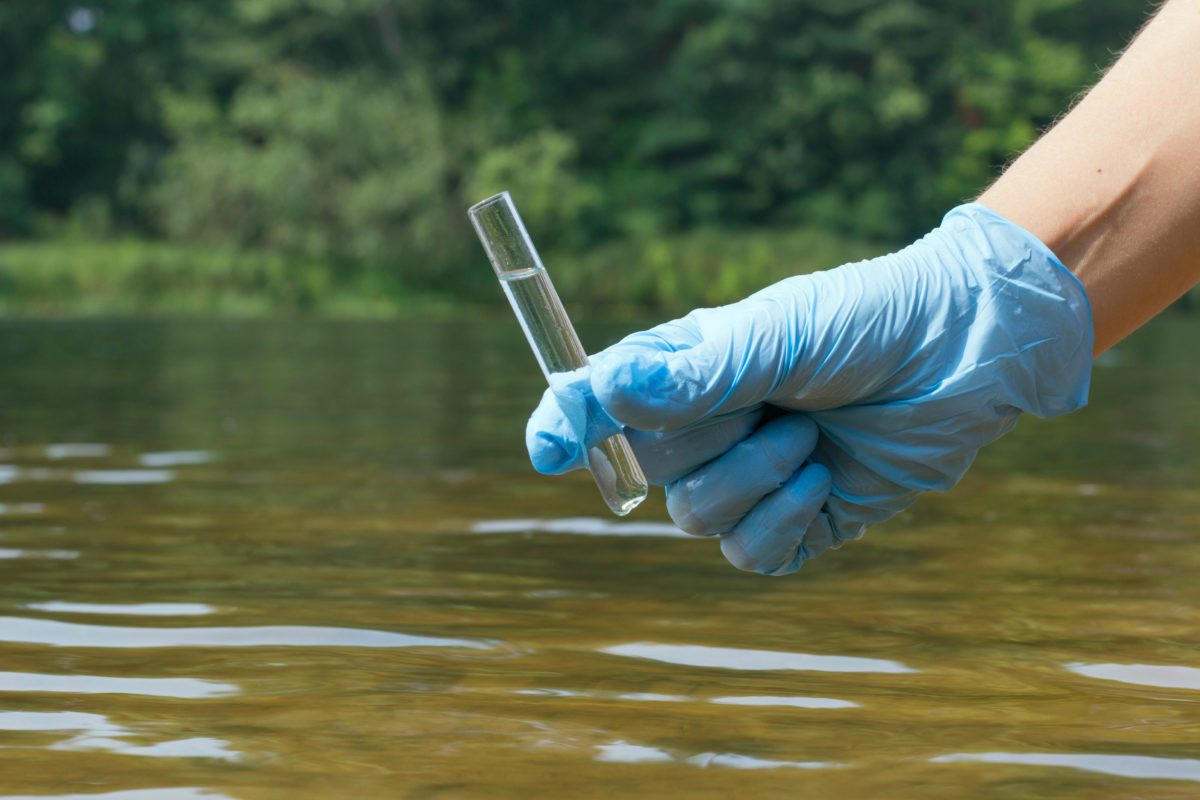


NRD Litigation: Judi Durda to Present on Scientific Developments Involving PFAS
Press Release
August 10 2021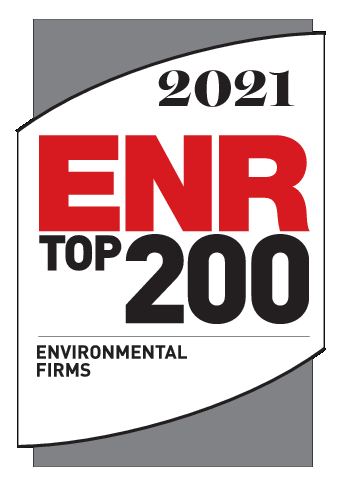

Integral Consulting Inc. Announces Reorganization Focused on Client Service and Ongoing Growth
Press Release
April 27 2021Perfluorohexanoic acid toxicity, part II: Application of human health toxicity value for risk characterization
Publication
January 07 2019
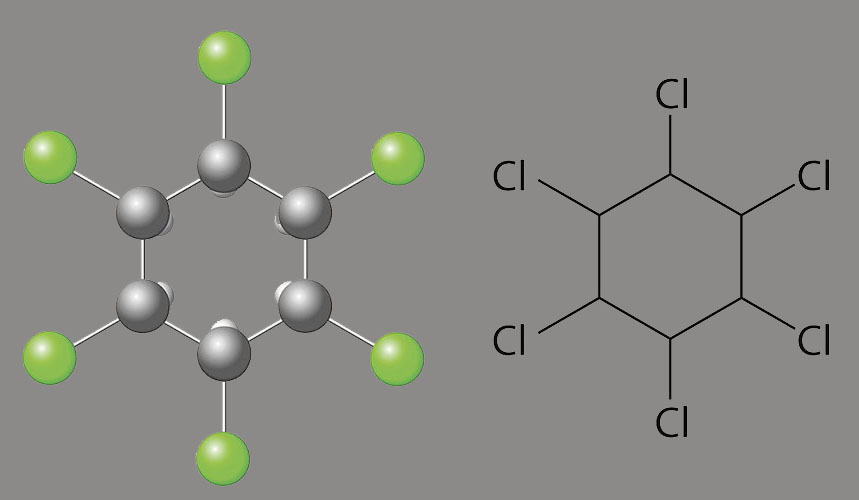

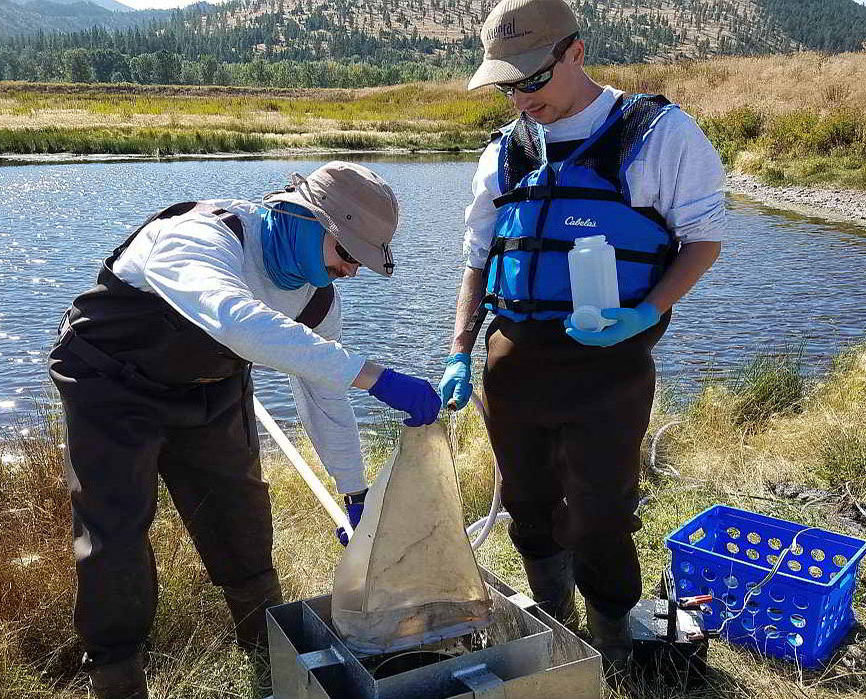
Toxicology, Fate and Transport, and Regulatory Guidance, Perfluoroalkyl Chemicals
Case Study
May 23 2019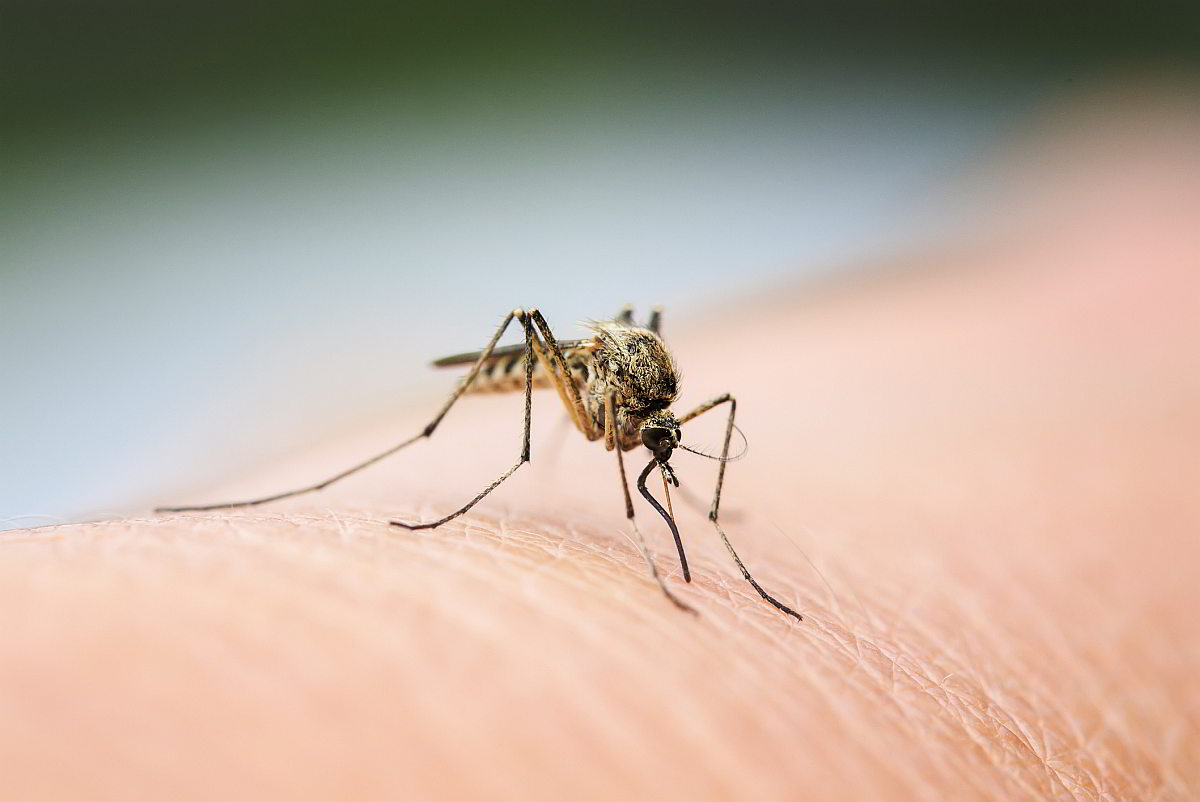
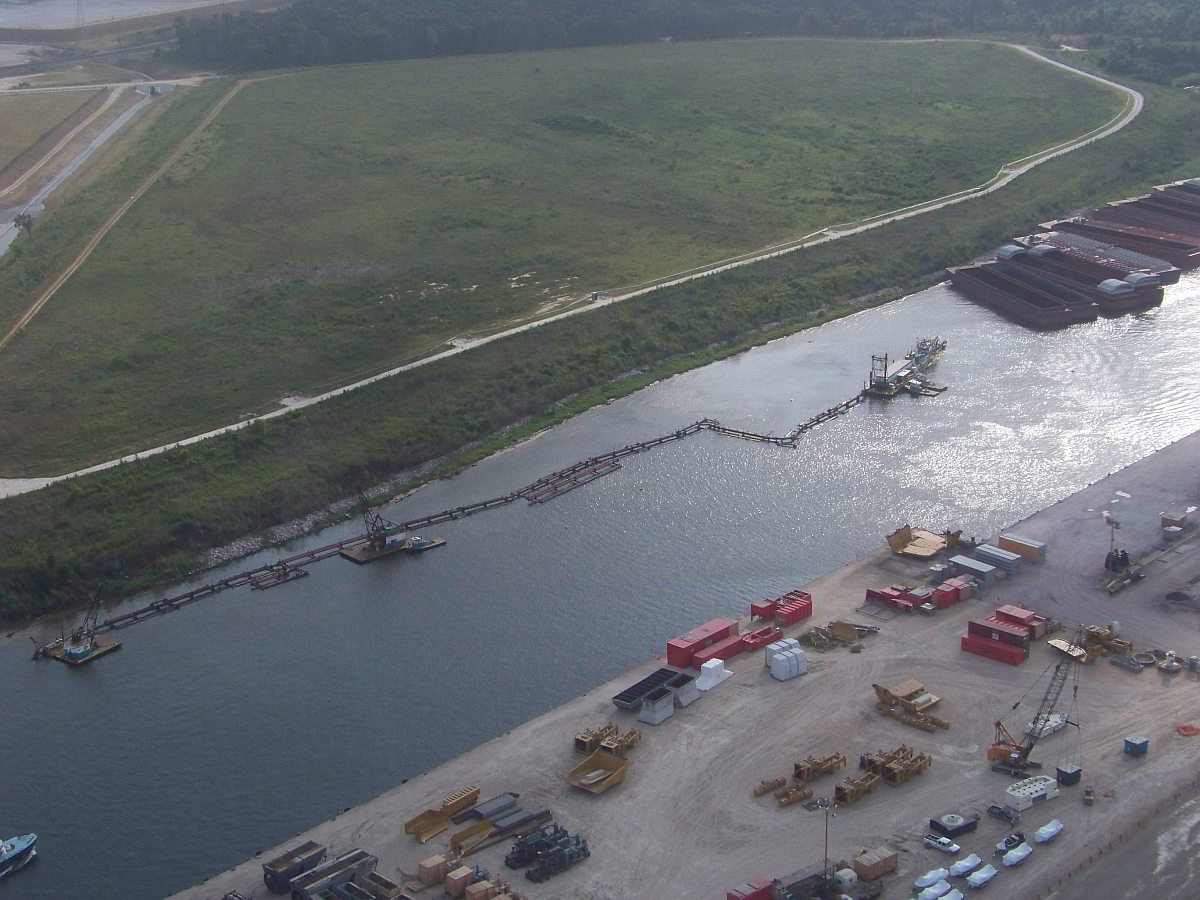

- Contaminated Sediments
- PFAS/Emerging Contaminants
- Risk Assessment
- Biosolids Risk Assessment
- Incineration Risk Assessment
- Pharmaceuticals, Antibiotics, Antimicrobials, and Pathogens
- Radiological Risk Assessment
- Metals Toxicology and Assessment
- Natural Resource Damage Assessment
- Toxicology
- Forensics
- Fate and Transport
- Remedial Design
- Department of Defense Site Assessment
- Environmental Impact Assessment
- Litigation Support
- Product Stewardship
- Environmental Modeling
- Biomonitoring
Contaminated Sediments
Provided technical support to assess risk reduction associated with different remedial alternatives. Also led efforts to develop biological metrics to assess system response post-remedy. Chemicals of interest included mercury and PCBs.
Assisted in development of the remedial design for a contaminated sediment site in Michigan. Constituents of concern included mercury, PCBs, and PAHs.
Evaluated ecological risks associated with land disposal of wastewater treatment sludge. Evaluation included statistical spatial evaluation of residual metal concentration in soils along with screening-level risk calculations. Constituents of concern included cadmium, copper, chromium, nickel, and zinc. Evaluation conducted using Ohio EPA ecological risk assessment guidance.
PFAS/Emerging Contaminants
Worked on a team evaluating human toxicology of 1,2,3-trichloropropane and prepared comments on proposed regulatory standard in New Jersey.
Conducted toxicological review and derived toxicity reference doses for p-chlorobenzene sulfonic acid and five other organic acids present in groundwater near a former industrial facility near Las Vegas, Nevada. Toxicological work was adopted by the State of Nevada to establish groundwater concentration limits to support regulatory evaluations in the state.
Conducted toxicological review of the mechanism of action of 1,4-dioxane related to hepatotoxicity in humans. Reviewed regulatory standards and assessed the implication of alternative dose-response models on drinking water standards.
Participated in an international panel designed to address needs for assessment and management of emerging contaminants in the Great Lakes.
Evaluating fate and toxicity in a variety of environmental settings.
Conducted reviews of toxicological properties of a variety of nanomaterials.
Evaluated natural resource damages under state law related to perfluorinated chemicals in groundwater, rivers, and lakes. Used resource equivalency and other economic methods to assess damages. Supported negotiations with trustees.
Risk Assessment
Evaluated ecological risks potentially associated with releases at a coal-fired power plant. Constituents of concern included selenium and arsenic.
Principal in charge of human and ecological risk assessments at a former wood treatment site.
Evaluated potential aquatic toxicity of copper using biotic ligand model and other tools.
Provided technical support to clients regarding risk assessment and risk management issues under TSCA.
Provided technical support to multiple clients to address human health and ecological risks at former wood treatment sites where creosote and pentachlorophenol were used. Sites regulated under CERLCA and RCRA.
Evaluated ecological risks associated with land disposal of wastewater treatment sludge. Evaluation included statistical spatial evaluation of residual metal concentration in soils along with screening-level risk calculations. Constituents of concern included cadmium, copper, chromium, nickel, and zinc. Evaluation conducted using Ohio EPA ecological risk assessment guidance.
Evaluated human health and ecological risks from perchlorate at a former rocket fuel manufacturing facility. Used evaluation to support remediation and redevelopment designs at the site.
Led human health and ecological risk assessments of mercury present in a marine environment.
Principal-in-charge for human health and ecological risk assessment for a former petroleum storage site in Montana. Groundwater contamination and potential discharge to a nearby creek were evaluated along with other pathways. Used risk-based assessments in support of remedy development.
Conducted an evaluation to examine potential human health risks from exposure to beef from cattle that have grazed on pasture containing PCBs. Assessment included evaluation of distribution of beef in the commercial marketplace. Supported alternative risk-based remedy design for the site.
Led ecological risk assessment efforts for a creek in upstate New York. Key constituents were arsenic and DDT.
Prepared environmental risk characterization report consistent with the Massachusetts Contingency Plan. The key element of the risk characterization was differentiation between impacts caused by hazardous constituents versus physical habitat alterations. Phthalates were a principal hazardous constituent of concern.
Conducted human and ecological risk evaluations for a former mining site in Illinois and oversaw residential soil cleanup. Lead and other metals are of potential interest. Work is being conducted under the state’s Tiered Approach to Corrective Action Objectives (TACO) program.
Designed and implemented a camera survey to document human use at a Superfund site in the mid-Atlantic region. Information on the frequency of use, types of activities, and exposed population gathered to support development of site-specific exposure assumptions in the risk assessment.
Evaluated human health risks from vapor intrusion at a Brownfields redevelopment site. Work has included soil vapor sampling program design, exposure modeling, and risk assessment.
Technical and strategic lead to address human health and ecological risks associated with groundwater and surface soil contamination at an industrial complex in Nevada. Key issues include perchlorate and volatile organic compound contamination of groundwater and pesticide bioaccumulation and exposure in the terrestrial and ephemeral aquatic environments.
Assessed risks to humans and terrestrial and aquatic wildlife posed by waste sites regulated under CERCLA, RCRA, and state regulatory programs. Assessments involved field identification of potential receptor species and human activity patterns, quantitative evaluation of human and wildlife exposure, interpretation of toxicity data, and application of ecological and toxicological principles. Conducted deterministic and probabilistic (e.g., Monte Carlo) assessments. Lead investigator or technical director for more than 100 site investigations. Types of facilities evaluated include pesticide and organic chemicals manufacturing facilities; chlor‑alkali plants; PCB and dioxin waste sites; hydrocarbon waste sites; wood treatment facilities with copper, chromium, and arsenic contamination; Department of Defense facilities; railyards; metal finishing and processing sites; mining sites; municipal and hazardous waste landfills; mixed industrial waste sites; and contaminated rivers and estuaries.
Co‑principal investigator of a regional-scale risk assessment conducted to identify, analyze, and rank the impacts of various stressors on overall ecological health in the Delaware Estuary. Stressors evaluated included physical (e.g., salinity, sedimentation, wetland loss), biological (e.g., invasive species), and chemical (e.g., petroleum, PCBs, mercury) forms.
Evaluated potential ecological risks associated with residual sediment contamination resulting from an arsenic acid spill in a river. Assessment utilized sediment sampling data and a detailed analysis of arsenic speciation and sediment chemistry to assess aquatic life risks.
Evaluated potential ecological impacts associated with DDT and mercury waste sites in a southern bottomland wetland habitat. Comprehensive assessment involved evaluation of tissue residue data and bioassay data. A trophic model was constructed for the site to interpret chemical accumulation within the food web. Risks were assessed for a variety of wetland birds (e.g., heron, wood stork, osprey), mammals, amphibians, fish, and invertebrates.
Critically reviewed and compiled literature data on the biological accumulation of DDT and its metabolites in aquatic and terrestrial systems. Prepared database of sediment to organism bioaccumulation factors for multiple species across trophic levels. Data were compiled to support Monte Carlo evaluation of DDT accumulation in terrestrial and aquatic food webs.
Evaluated environmental impacts associated with construction and operation of a uranium enrichment plant in Louisiana. Task involved a detailed description of the ecology of the area and an evaluation of the potential impacts associated with emissions from the facility.
Assisted in the preparation of and provided quality assurance oversight of an ecological risk assessment conducted in Sydney, Australia, at the site of the Year 2000 Olympics. Activities included assessment of risks in saltwater, estuarine, freshwater, and rare upland environments; identification of remediation needs; development of mitigation strategies; and negotiation with Australian regulatory agencies.
Assessed reproductive and other health risks to horses exposed to accidental and long-term chemical air emissions from a manufacturing plant. Evaluated both acute and chronic health risks under routine and upset operating conditions. Particle deposition and subsequent ingestion exposures also evaluated. Evaluation conducted as part of a series of evaluations to quell community concerns regarding plant emissions.
Conducted risk assessment peer reviews for private sector clients to determine if the assessments conformed to applicable guidance yet incorporated recent scientific advances in the areas of exposure assessment, toxicity assessment, and uncertainty analysis.
Evaluated potential exposures and risks in workers constructing a tunnel in Baltimore Harbor. Potential exposure to PAHs and metals were of particular concern. Acute and long-term health risks were evaluated.
Assisted in the development and teaching of training courses in risk assessment. Courses included detailed lectures on hazard assessment, dose-response evaluation, exposure assessment, and risk characterization.
Reviewed and commented on proposed regulations on behalf of private clients.
Biosolids Risk Assessment
Led team conducting research on monitoring the presence of ARM/ARG in sludge and in the environment. Developed framework for preliminary risk evaluations.
Conducted risk and exposure analyses to assess degree of risk posed by land application of municipal sludge. Both chemical and pathogenic risks considered. Evaluated potential for impacts on local residents from sludge-associated odors. Case settled.
Evaluated human health risks associated with various technologies proposed for remediation of former wastewater treatment lagoons at an industrial facility in Ohio. Risk assessment included an evaluation of exposures resulting from lagoon dewatering, sludge excavation, and sludge incineration.
Evaluated potential human health exposures and risks associated with land farming of waste sludges in California. The assessment included evaluations of worker exposures during sludge application, offsite air exposure resulting from dust transport, and dietary exposures associated with consumption of beef and vegetables produced in the farmed area.
Incineration Risk Assessment
Evaluated potential ecological impacts associated with emissions from proposed municipal and solid waste incinerators and cement kilns that use waste as fuel. Multipathway, multichemical assessments included evaluation of food chain exposures to mercury, dioxin, and PCBs in terrestrial wildlife species and surface water exposures to multiple organic and inorganic chemicals in aquatic species. Conducted risk assessments for more than a dozen facilities.
Conducted ecological risk assessment for a facility in Florida. Evaluation focused on exposures to bioaccumulative compounds (methylmercury, dioxin) in federally endangered and threatened species, including the Florida panther and wood stork.
Evaluated ecological risks associated with emissions from a carbon regeneration facility in Arizona. Constituents of concern included mercury and dioxin and more than 200 other chemicals.
Pharmaceuticals, Antibiotics, Antimicrobials, and Pathogens
Led team conducting research on monitoring the presence of ARM/ARG in sludge and in the environment. Developed framework for preliminary risk evaluations.
Conducted risk and exposure analyses to assess degree of risk posed by land application of municipal sludge. Both chemical and pathogenic risks considered. Evaluated potential for impacts on local residents from sludge-associated odors. Case settled.
Conducted risk assessment to evaluate potential for human disease from exposure to zoonotic pathogens in food. Assessment included evaluations of microbial ecology, dose-pathogen response assessments, and analysis of exposure pathways along commercial food distribution networks.
Led the risk assessment effort to evaluate comparative risks on human and wildlife populations of disease versus pesticide use and other management actions. West Nile Virus is an arthropod-borne disease associated with specific viruses from the Flaviviridae family. Work was used to assist in development of a vector management program in Suffolk County, New York.
Radiological Risk Assessment
Conducted an assessment of health and ecological risks associated with mercury, PCBs, pesticides, and radiological constituents in a river in Long Island, New York.
Evaluated potential ecological risks associated with radiation at a U.S. Army test facility and research laboratories.
Evaluated potential human health risks from tritium in groundwater.
Metals Toxicology and Assessment
Conducted toxicological and ecological assessments of potential impacts of selenium. Evaluations included assessment of potential impacts of coal ash releases at a power plant and selenium releases associated with phosphate mining.
Evaluated ecological and human toxicology and risk at multiple Superfund sites. Work has included the design and conduct of field studies to address mercury bioaccumulation and toxicity in aquatic systems, food web modeling and assessment, fish consumption evaluations, air monitoring, risk assessment, cleanup level development, and forensic evaluations.
Evaluated potential aquatic toxicity and risks associated with copper releases at a variety of waste sites. Work has included biotic ligand modeling, benthic toxicity testing, and risk assessment.
Evaluated potential ecological and human health risks associated with arsenic released via spills or associated with historical activities from former wood treatment or other industrial facilities. Work has included human health risk assessment, ecological risk assessment, and field studies to assess bioavailability and form of arsenic in biological tissue.
Evaluated potential ecological risks and damages related to zinc in aquatic systems. Evaluations have included toxicity assessments and forensic evaluation of historical releases.
Evaluated potential ecological risks and damages at numerous mining sites, landfills, and former firing range locations.
Evaluated source, bioavailability, and ecological risk associated with manganese in aquatic and wetland settings.
Evaluated ecological risks associated with cadmium in aquatic, wetland, and terrestrial environments. Work has included toxicity testing, source evaluation, and fate assessment.
Evaluated human health and ecological risks of chromium at former industrial facilities. Work has included fate and transport evaluations and exposure and toxicity assessments.
Natural Resource Damage Assessment
Led evaluations of potential natural resource damages in wetlands, lakes, and uplands at a former manufacturing facility in New Jersey. Constituents of concern included lead and arsenic.
Led technical efforts related to potential natural resource damage claims for a former manufactured gas plant. Constituents of concern included PAHs.
Led technical efforts related to potential natural resource damage claims at a former landfill. Constituents of concern included metals and PCBs.
Led technical evaluations of potential natural resource damage claims for a former research facility in the western United States. Constituents of concern included radionuclides.
Led technical evaluations of potential natural resource damage claims for a former industrial site. Constituents of concern included PCBs, mercury, zinc, arsenic, and antimony.
Provided technical and strategic support to address potential natural resource damage claims for a mining site in the western United States. Constituents of interest included naturally occurring minerals.
Led technical efforts related to potential natural resource damage at a refinery site in Colorado where petroleum has been released to groundwater and is potentially discharging into a river.
Led technical efforts related to potential natural resource damage claims for a mining site in the Midwest. Addressed ecological and human use issues. Constituents of interest included lead, cadmium, nickel, and zinc.
Provided technical and strategic consultation for natural resource damage settlement discussions and potential litigation on a matter involving widespread presence of manufactured chemicals in an urban/suburban area’s groundwater.
Provided technical and strategic advice to an industry client on a pending groundwater natural resource damage claim involving alleged injuries to groundwater and a wetland.
Provided technical and strategic support for a natural resource damage assessment for tidal wetlands containing creosote associated with a former wood treatment facility.
Led a joint natural resource damage assessment and ecological services analysis for a Texas bayou, with a focus on benthic community injury from chlorinated solvents and pesticides. Restoration efforts focused on identification and evaluation of restoration projects for salt marsh and other types of wetlands.
Retained as a consulting expert to address fate, transport, and natural resource damages associated with a petroleum spill.
Provided strategic and scientific support to address natural resource injury issues in a wetland and river in Alabama as part of a cooperative assessment process with state and federal trustees. Injuries in fish, birds, and the benthic community potentially associated with sediment in food-web contamination were evaluated. Restoration efforts focused on identification and evaluation of restoration options in forested wetland systems, including hydrological modifications, reforestation, and invasive species control.
Provided technical oversight support of natural resource damage studies conducted by the U.S. Fish and Wildlife Service (USFWS) at a DDT Superfund site in Alabama. Provided critical review and comment on behalf of a PRP of studies designed to assess DDT accumulation in the aquatic and terrestrial food web and potential impacts on breeding populations of neotropical migrant bird species. Assisted in the design of a parallel study designed to address avian population risks.
Assisted an industry consortium in developing a statement of work to address ecological risks and natural resource damages in an estuary in Louisiana. Efforts included developing a framework for studies designed to assess the impacts of multiple chemical and nonchemical stressors from point and non-point sources. An important goal of the study was to maximize the integration of natural resource damage assessment and RI/FS activities and thereby reduce redundant or contradictory data demands.
Conducted assessments of injury to natural resources at a Superfund site. Developed the framework for service flow model to account for seasonal dynamics on the presence, nature, and extent of habitat in a river floodplain and led technical negotiations with state and federal trustees.
Provided strategic and technical support to address natural resource damage claims for a lake in Minnesota. Key constituents of concern included PAHs, lead, cadmium, zinc, and chromium.
Provided strategic support to a PRP during the initial stages of damage assessment activities initiated by natural resource trustees. Assisted in the development of a technical strategy for addressing trustee concerns.
Provided strategic support to a PRP. Activities included development of technical strategy for addressing trustee concerns.
Provided strategic support to PRPs during the initial stage of damage assessment activities for a river in New York. Conducted injury assessments in conjunction with habitat equivalency analyses.
Toxicology
Conducted a technical review of the toxicity basis for regulatory standard for p-toluic acid. Review utilized a weight-of-evidence approach that evaluated in vivo and in vitro test results, chemical surrogates, and metabolically relevant compounds.
Prepared documents to support revisions of regulatory drinking water standards in North Carolina.
Conducted literature review and developed toxicity criteria for assessment of reproductive toxicity in songbirds exposed to mercury via the diet.
Conducted literature review of toxicity of mercury in fish and used dose-response models to develop residue-based toxicity criteria with which to assess mercury risks in fish.
Headed a team of toxicologists investigating the carcinogenicity of alpha-HCH, beta-HCH, and gamma-HCH (lindane). Toxicological data indicate that these compounds are either not carcinogenic or are carcinogenic in rodents, but operate via a threshold-based mechanism. Current regulatory toxicity criteria are derived using the linear low-dose response model, which is the default cancer dose-response model adopted by EPA. Conducted analysis that indicated that beta- and gamma-HCH are not carcinogenic, and that alpha-HCH is potentially carcinogenic but operates via a nonlinear mode of action. The alternate toxicological evaluations were accepted by the State of Nevada for use in assessing risks and setting cleanup levels.
Led technical efforts to develop human health toxicological criteria for a series of five organic acids that are of concern in groundwater at a site in Nevada. Work involved evaluation of biochemical mechanisms of action, analysis of structure-activity relationships, and review of available in vivo and in vitro toxicological data. Criteria were accepted by the state regulatory agency for use.
Conducted critical reviews of the toxicological basis of human health regulatory criteria used by the state of Texas for DDT, BHCs, hexachlorobenzene, and chlorinated benzene products. Assessed feasibility of petitioning for change in criteria.
Prepared a petition on behalf of an industry consortium requesting a change to the federal drinking water standard for lindane. Petition was submitted as comments in response to EPA’s 5-year national review of drinking water standards.
Derived site-specific aquatic life criteria for gamma-BHC and other BHC isomers to support risk assessment and remedial design activities at a waste site where BHC groundwater discharge to surface water was at issue. Site-specific criterion for gamma-BHC was 40 times greater than the promulgated state criterion. Site-specific criteria for other BHC isomers were more than 2,000 times those originally considered by regulatory agencies. Site-specific criteria were accepted by both EPA and the state.
Evaluated carcinogenicity data for DDT using 1996 proposed EPA guidelines for carcinogen assessment. Considered epidemiological, genotoxicity, bioassay, and mechanistic data, focusing importantly on the role of gap‑junction inhibition in DDT carcinogenesis. Compiled weight-of-evidence assessment of DDT carcinogenicity. Assessment was conducted to support modifications of a fish consumption advisory that was posted in a water body near a hazardous waste site where DDT had been manufactured.
Critically reviewed toxicity data related to the effects of DDT and its metabolites on avian reproduction. Derived toxicity reference values based on a combination of laboratory and field data and structure-activity relationships. Evaluated toxicological data statistically to support Monte Carlo assessment of ecotoxicological risks.
Critically reviewed ecotoxicological, fate, and bioaccumulation literature for the organochlorine pesticides mirex and kepone. The purpose of the review was to derive toxicity reference values and bioaccumulation factors for use in site-specific ecological risk assessments. The approach considered toxicity data related to ecologically relevant endpoints (i.e., reproduction, survival) and utilized a weight-of-evidence approach to data interpretation.
Conducted comprehensive review of toxicity literature for the organochlorine pesticide lindane and other BHC isomers on behalf of an industry consortium. Efforts were part of a process to solicit changes to regulatory toxicity values listed in EPA’s IRIS database.
Developed acceptable exposure limits for air pollutants based on organ-specific toxicity. Task involved critical review of the available toxicological data and the use of selected scientifically valid data, conversion factors, and appropriate uncertainty factors in the calculation of exposure limits.
Developed acceptable exposure limits for hazardous chemicals in drinking water and air. Task involved review and evaluation of toxicity data and synthesis of pertinent data to derive concentration limits.
Prepared toxicity profiles for chemicals present at Superfund hazardous waste sites, focusing on potential carcinogenic effects and other irreversible toxic effects of the chemical.
Forensics
Directed a forensic assessment to evaluate sources of mercury, PCBs, and other chemicals present in river sediments and wetlands in a southern estuary. Assessments included visual (e.g., fingerprinting, source mapping) and statistical forensic techniques (e.g., principal component analysis), coupled with historical source evaluation and fate and transport modeling.
On behalf of a PRP group, developed a monitoring study to assess mercury concentrations in fish and crab to address EPA concerns about potential health risks for recreational users of a lake downgradient of a Superfund site. The study design took into account the likely multiple sources of mercury in the industrialized area surrounding the site, fish and crab movement into and out of the lake from the nearby estuary, and fate and transport pathways for mercury from the site.
Retained as a technical expert to address the potential contribution of groundwater to surface water and sediment at a Texas bayou. Led technical analyses, as well as negotiations with the state and trustees.
A probabilistic exposure analysis model was developed within a risk-based framework to determine safe levels of the organochlorine pesticide DDT in the prey of wading birds foraging in freshwater wetlands. The novel approach developed as part of this probabilistic model offered the distinct advantage of incorporating the inherent variability in behavior that occurs within natural wading bird populations, such that the range of theoretically possible exposures could be evaluated. The output of this model was a performance standard based on plausible exposure, assessed through quantification of the inherent variability and uncertainty in biological attributes of wading birds.
Directed literature review and analysis conducted to characterize the likely fate of BHC pesticides in groundwater and surface water. Analysis was conducted to evaluate the feasibility of natural attenuation as a remediation option at a waste site where BHC was present in the groundwater. Aquatic life was the principal receptor of concern in adjacent waters.
Fate and Transport
Directed efforts to evaluate the risk consequences and management needs to address the release of contaminants in groundwater discharging to surface waters. The focus of investigations included fate and transport assessments, loading and discharge modeling and monitoring, forensic source allocation, toxicity assessment, and risk evaluation. Sites addressed are located throughout the United States.
Remedial Design
Served on a project team that designed supplemental remediation to address residual DDT present in the sediments of the river floodplain. Evaluated DDT uptake in fish under different remediation scenarios to determine the necessary scale of remedial actions. Modeling included evaluation of accumulation changes in response to variable flooding regimes.
Provided long-term support to a post-remediation monitoring effort at a DDT waste site. Efforts included evaluation of yearly sediment, fish tissue, and sediment bioassay data and preparation of annual monitoring reports to EPA.
Conducted extensive review of the ecotoxicological, statistical, and regulatory basis of a sediment remediation level established by EPA in a record of decision for a mercury waste site located in an embayment of a large river in New York. The review took advantage of recent toxicological data for mercury, state and federal sediment management strategies, and statistical evaluations of sampling data to develop a remediation strategy.
Designed and executed a study to assess perchlorate in soils at a former rocket fuel manufacturing facility. Used data to support risk assessment and remedial design.
Assisted in the development of a plan to characterize and mitigate in-stream impacts from mining operations.
Evaluated potential human health exposures and risks associated with land farming of waste sludges in California. The assessment included evaluations of worker exposures during sludge application, offsite air exposure resulting from dust transport, and dietary exposures associated with consumption of beef and vegetables produced in the farmed area.
Department of Defense Site Assessment
Principal-in-charge for human and ecological risk assessments conducted as part of site inspection reports at formerly used defense facilities under subcontract agreement with Alion Science and Technology Corporation. Provide senior review and technical input on all human and ecological risk assessment activities. Senior technical resource on toxicological evaluations and assessments of munitions and related compounds.
Evaluated ecological and human health risks associated with past chemical agent testing, munitions testing, pesticide use, and waste disposal at a U.S. Army facility located on the Chesapeake Bay. The facility covered 80,000 acres and contained more than 700 individual waste sites. The primary focus of the assessment was potential impacts on the Chesapeake Bay fishery and shellfishery, although impacts on other ecological resources also were evaluated. Surface water, sediment, and soil ecological risks were evaluated along with potential impacts from groundwater discharge to the Bay. Chemicals of concern included munitions, chemical warfare agents, mercury, arsenic, and other heavy metals, chlorinated pesticides, and volatile organic chemicals. The risk assessment was the first conducted at Aberdeen under the base cleanup program.
Headed a team of scientists tasked with developing comprehensive field and laboratory studies to evaluate ecological impacts associated with various hazardous waste sites at Aberdeen Proving Ground. The study area consisted of more than 80,000 acres of relatively undeveloped coastal plain uplands, wetlands, and estuary. The biological assessment program was designed to evaluate potential impacts at various trophic levels within both aquatic and terrestrial communities. Five basic types of bioassessment techniques were incorporated into the program: toxicity tests; residue analyses; histological studies; community analyses; and harvest surveys.
Conducted baseline human health and ecological risks assessments at military installations nationwide as part of RI/FS‑related activities. Installations evaluated included North and South Tooele Army Depots in Utah, Umatilla Chemical Depot in Oregon, Fort Dix in New Jersey, and the St. Louis Ordnance Plant in Missouri. Evaluations included toxicological and exposure assessments for a number of military-specific compounds (munitions, chemical warfare agents) as well as other hazardous substances.
Assisted in the development of a sampling and bioassessment plan to evaluate hazardous chemical contamination at the Alameda Naval Air Station in California. Provided recommendations regarding sample type, number, location, and the timing of sampling events. Recommended specific species and bioassays appropriate for evaluating potential impacts in estuarine environments.
Developed bioassessment plan to investigate potential ecological impacts associated with past disposal of process wastewater from a munitions manufacturing facility. The bioassessment plan included bioassays using surface water and sediment from the adjacent creek system and residue analysis of soil invertebrates inhabiting uplands adjacent to former wastewater treatment ponds.
Environmental Impact Assessment
Directed an ecological impact evaluation of a proposed landfill development in Canada. Evaluation included chemical fate and transport modeling, bioaccumulation, exposure, and risk assessment in aquatic, terrestrial, and agricultural ecosystems. Potential ecological impacts associated with hypothetical transportation accidents were evaluated using Monte Carlo simulation. Identified and described cumulative impacts, resource recovery, and mitigation measures, as necessary.
Evaluated potential ecological risks associated with discharge of treated wastewater from a mining operation. The assessment included evaluation of the adequacy of the specified wastewater chemical discharge limits, as well as an evaluation of potential impacts in the event of an accident.
Evaluated potential ecological impacts associated with the failure of a proposed groundwater treatment system and the subsequent discharge of contaminated groundwater to surface water in a coastal area of central California. Potential impacts were evaluated for three rare amphibian species known to breed in surface waters at the site. Toxicity was estimated using quantitative structure-activity relationship analysis.
Evaluated potential ecological impacts associated with timbering in upland hardwood forests of coastal and piedmont Maryland. The focus of the assessment was on potential impacts of forest fragmentation on neotropical migrant bird species breeding in the area. Impacts on the local plant and wildlife communities and endangered species of the area also were evaluated.
Evaluated the status and viability of desert tortoise populations in the Las Vegas Valley, a part of the Mojave Desert in Nevada. The analysis focused on the habitat suitability of the Las Vegas Valley and the current stresses placed on the tortoise population within the Valley. The probability of extinction for the Valley population was evaluated based on concepts derived from conservation biology and extinction theory.
Evaluated the potential population level effects of organochlorine pesticides upon the endangered Indiana bat (Myotis lucifugus). Analysis focused on organochlorine accumulation and biomagnification via aquatic and terrestrial insect vectors. Specific analysis involved an evaluation of optimal foraging habitat and seasonal distribution of the Indiana bat. Transmission of organochlorine pesticides through successive trophic levels was assessed and potential effects on the bat populations were evaluated.
Conducted wetlands evaluations at a hazardous waste site. Task involved field delineation of wetland boundaries based on vegetation, soil, hydrological characteristics, and evaluation of wetland functional values.
Evaluated potential ecological impacts associated with mining activities, including impacts on wetlands, national forests, and endangered species habitats.
Performed qualitative risk assessment of effects of oil drilling fluids and their discharge on fish and waterfowl habitats in the North Slope of Alaska.
Assessed existing and potential fish and wildlife impacts of National Priority List hazardous waste sites.
Reviewed Section 404 Clean Water Act dredge and fill permits to identify and mitigate development-related impacts to wetlands and fish and wildlife habitats.
Evaluated potential fish, wildlife, and wetland impacts of National Pollutant Discharge Elimination System wastewater discharges.
Reviewed summarized toxicity data for hazardous chemicals and fish and wildlife resources. Prepared white paper assessing ecological toxicity of toxaphene.
Reviewed environmental assessments and environmental impact statements. Developed options to mitigate impacts when necessary.
Evaluated habitat impacts of large-scale Corps of Engineers flood control projects and Soil Conservation Service stream dredging projects.
Designed and conducted field surveys of biotic resources to assess the existing degree of contamination in wetland habitats.
Litigation Support
Selected as technical expert to address natural resource damage claim associated with past activities at a former manufacturing site. Constituents include lead and arsenic.
Selected as a technical expert to address potential natural resource damage claims from historical mining operations. Constituents include selenium.
Selected as a technical expert to evaluate potential ecological risks associated with selenium and arsenic. Expert report and deposition on behalf of the defendant in the matter of Kentucky Waterman Alliance (Plaintiffs) and the Sierra Club v. Kentucky Utilities Company (Defendant). Case:5:17-CV-00292-DCR. In U.S. District Court. Summary judgment dismissing plaintiff’s claims.
In re: W. R. Grace & Co., et al., Case No. 01 01139 (AMC) (Bankr. D. Del.). Report summarizing the opinion of Judi L. Durda regarding the sufficiency of available information for the Montana Department of Environmental Quality to identify natural resource damage claims arising from the release of asbestos at Operable Unit 3 of the Libby Asbestos Superfund Site.
Selected by the Department of Justice to serve as an expert in natural resource damage assessment proceedings.
Selected as a technical expert in anticipation of litigation to address natural resource damages at a former manufacturing site. Constituents include zinc and PCBs. Case resolved via a negotiated settlement.
Served as an expert witness in anticipation of litigation in a case involving mercury, dioxin, and PCB contamination in sediment. Evaluations were focused on examining potential sources of these chemicals in a southern estuary.
Served as a technical expert in mediation to address potential natural resource damages associated with alleged mineral release from mining operations.
Served as consulting expert in a case related to alleged environmental releases surrounding oil production facilities at an international location.
Served as consulting expert in a case related to alleged environmental releases surrounding oil production facilities at a location along the U.S. Gulf Coast.
Served as consulting expert on fate and effects of oil as part of damage/injury assessment for an oil spill.
Provided technical support to counsel to address alleged effects of pesticide runoff from farming operations on survival and growth of shellfish in an aquaculture facility. Case settled.
Evaluated potential human health and environmental risks associated with tritium emissions from a national testing laboratory. Evaluation included the derivation of risk-based air concentrations based on new modeling of radiological risk. Case settled.
Conducted risk and exposure analyses to assess the degree of risk posed by land application of municipal sludge. Both chemical and pathogenic risks were considered. Evaluated potential for impacts on local residents from sludge-associated odors. Case settled.
Provided technical risk assessment support to litigation team. Addressed potential human health and ecological risks associated with alleged chemical release. Case settled.
Assisted counsel in evaluating the validity of cost claims made for remedial investigation and cleanup activities at waste sites. All cases settled.
Critically analyzed plaintiffs’ medical records to evaluate the validity of health claims and to determine the potential for alternate causes for alleged health effects. Case settled.
Provided technical support to counsel to address cost allocation and liability issues at a former manufacturing facility where PCBs had been released. Addressed similar issues for litigation involving PCB sites in South Carolina and Illinois. Cases settled.
Provided technical support to counsel to address cost allocation and liability issues at an operating pharmaceutical manufacturing facility where hazardous wastes had been disposed. Cases settled.
Provided technical support to counsel to address cost allocation and liability issues at a site where pesticide- and petroleum-containing consumer products were blended and packaged. Case settled.
Product Stewardship
For an international trade group, provided technical review and comment on proposed regulation of talc products in Canada. Evaluated the validity of the potential human health exposure, toxicology, and risk profile prepared by the Government of Canada. Prepared detailed technical reports rebutting Canada’s position.
Led technical team evaluating the safety of short-chained PFAS used in consumer product manufacturing. Support included compilation, review, analysis, and reporting on toxicology, fate and transport, and health effects data.
Conducted risk assessment to evaluate the safety of phthalates in food and consumer products. The assessment included detailed reviews of the reproductive, endocrine, and developmental toxicology of phthalate esters along with the characterization of exposures in food and consumer products.
Evaluated reproductive toxicity and endocrine modulating effects of phthalate esters and the relationship to chemical structure.
Assisted in design of laboratory study to examine potential transport of chemicals from food packaging materials to the food. Directed statistical data evaluation of study results.
Conducted risk assessment to evaluate the potential for human disease from exposure to zoonotic pathogens in food. The assessment included evaluations of microbial ecology, dose-pathogen response assessments, and analysis of exposure pathways along commercial food distribution networks.
Evaluated safety of a medical device containing residual amounts of solvents after manufacture. Conducted toxicological and exposure assessments and designed testing protocol to determine solvent release during use. Used these data to refine estimates of potential patient exposure and risk. The product was determined to be safe.
Evaluated safety of a pharmaceutical product inadvertently released to groundwater. Conducted detailed reviews of clinical, epidemiologic, toxicity, and pharmacokinetic data to establish acceptable groundwater concentration limits. Relied on dose-response and incidence data to develop a probability-based concentration limit.
Served on two expert panels reviewing potential risks associated with chemicals used in plastics manufacture.
Environmental Modeling
Biomonitoring
Designed and implemented a study to elucidate aquatic food web structure in an estuary to support assessment of mercury and PCB transfer and bioaccumulation. Study elements included stable isotope analysis and gut content analysis of the top predators.
Designed and implemented a study to evaluate benthic community composition and the potential effects of mercury and other metals, PCBs, and nonchemical stressors in a tidal estuary.
Led biological study elements of a post-remediation monitoring plan to assess system response to remediation efforts.
Designed a study to examine bioaccumulation and trophic magnification in a New Jersey estuary. The plan included sampling for chemical residues in resident biota, stable isotopes to define food web structure, and fish gut content analysis to support understanding of key prey items in resident fish.
Led technical team conducting a remote sensing study to assess variability in marsh productivity and composition in wetlands.
Designed a study to examine bioaccumulation and trophic magnification in a Texas bayou. Study findings were supplemented by food web modeling to characterize overall accumulation in the system.
Designed a sediment sampling program to characterize chemical concentrations in a large tidal river adjacent to a hazardous waste site. The purpose of the study was to determine if chemicals present in the river were due to the site or other regional sources. The study design was complicated by the presence of multiple-point and non-point discharges throughout the watershed. Designed statistical protocol to evaluate effects of multiple chemical sources, as well as the influence of sediment physicochemical characteristics on concentration.
Developed a biomonitoring plan for mercury to satisfy a permit requirement for a facility that burned hazardous waste as fuel. Plan focused on bioaccumulation of mercury in fish in representative ponds within the study area. Plan specified sampling, analytical, and statistical procedures for data collection and analysis.
Headed a team of scientists tasked with developing comprehensive field and laboratory studies to evaluate ecological impacts associated with hazardous waste sites located on the Chesapeake Bay in Maryland. The study area consisted of more than 80,000 acres of relatively undeveloped coastal plain uplands, wetlands, and estuary. The biological assessment program was designed to evaluate potential impacts at various trophic levels within both aquatic and terrestrial communities. Five basic types of bioassessment techniques were incorporated into the program: 1) toxicity tests, 2) residue analyses, 3) histological studies, 4) community analyses, and 5) harvest surveys.
Assisted in the development of a sampling and bioassessment plan to evaluate hazardous chemical contamination at a hazardous waste site in San Francisco Bay. Provided recommendations regarding sample type, number, location, and the timing of sampling events. Recommended specific species and bioassays appropriate for evaluating potential impacts in estuarine environments.
Developed a bioassessment plan to investigate potential ecological impacts associated with past disposal of process wastewater from a munitions manufacturing facility. The bioassessment plan included bioassays using surface water and sediment from the adjacent creek system and residue analysis of soil invertebrates inhabiting uplands adjacent to former wastewater treatment ponds.
Developed a bioassessment plan to investigate potential benthic community impacts in a stream in New York. The plan included stream surveys to characterize benthic community composition and bioassays to characterize the potential toxicity of stream sediments.


